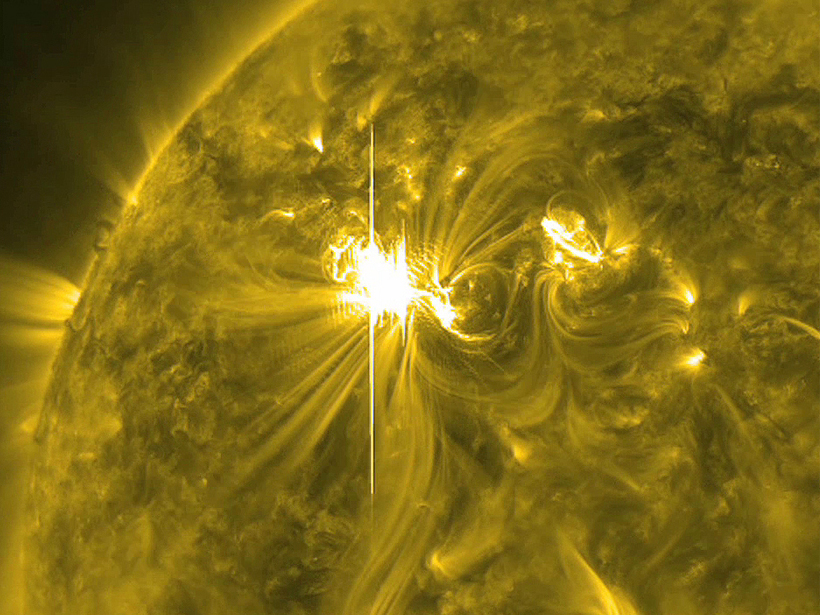Source: Space Weather
Large solar proton storms pose a serious risk for people and technology in space: They cause high radiation levels that can harm astronauts and damage essential equipment. Big storms are difficult to predict, but a new model created by Núñez could warn astronauts of imminent storms and give them precious time to prepare.
A proton storm is triggered by a huge burst of gas that erupts from the Sun and escapes into space (a coronal mass ejection). The burst hits protons in the solar wind ahead of it, accelerating them to very high energies and sending them racing along interplanetary magnetic field lines.
Any object in their path could be in for a high radiation exposure. Although the Earth is mostly protected by its own magnetic field, polar regions and spacecraft outside the field are at risk.
In 2011, the author released a model called UMASEP-10, which predicts the onset and intensity of proton storms with energies greater than 10 million electron volts (MeV). Meanwhile, the GLE Alert Plus system can forecast storms above 430 MeV. The author’s new model, called UMASEP-100, is the first to predict the onset and intensity of storms in the range of 100 to 430 MeV.
Like UMASEP-10, UMASEP-100 relies on data from the Geostationary Operational Environmental Satellites (GOES) system. GOES makes continuous observations of proton flux along magnetic field lines that connect the Earth to the Sun. It also looks for X-rays produced by solar flares, which can accompany coronal mass ejections. If high proton flux coincides with a large flare, the model predicts a proton storm.
To validate UMASEP-100, the author compared its predictions with actual proton storm events that took place between January 1994 and September 2013. The new model predicted the occurrence of 81% of the greater than 100 MeV events (38 out of 47 total), including a large proton storm that affected Earth and Mars in March of 2012. The model gave an average warning time of 1 hour and 6 minutes and had a false alarm rate of 30%. As a result, the author recommends combining UMASEP-100 with the existing UMASEP-10 model to get a more complete picture of potential proton storms.
In the future, a manned mission to the Moon or to Mars could incorporate onboard X-ray and proton flux sensors, as well as UMASEP-based prediction software. This would allow astronauts to receive storm warnings on their own, without a weather report from Earth. (Space Weather, doi:10.1002/2015SW001256, 2015)
—Sarah Stanley, Freelance Writer
Citation: Stanley, S. (2016), New model predicts big solar proton storms, Eos, 97, doi:10.1029/2016EO045621. Published on 11 February 2016.
Text © 2016. The authors. CC BY-NC 3.0
Except where otherwise noted, images are subject to copyright. Any reuse without express permission from the copyright owner is prohibited.

